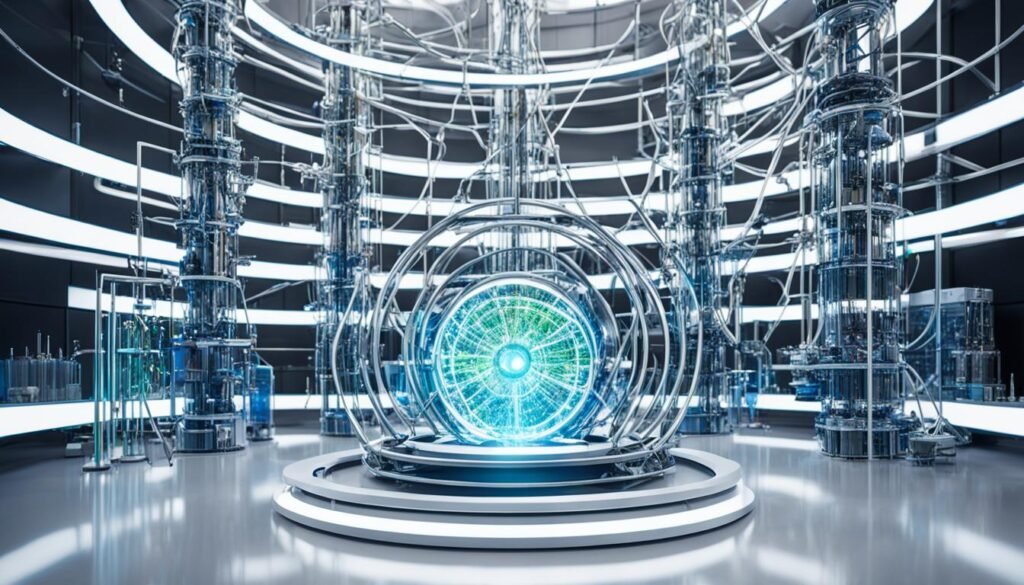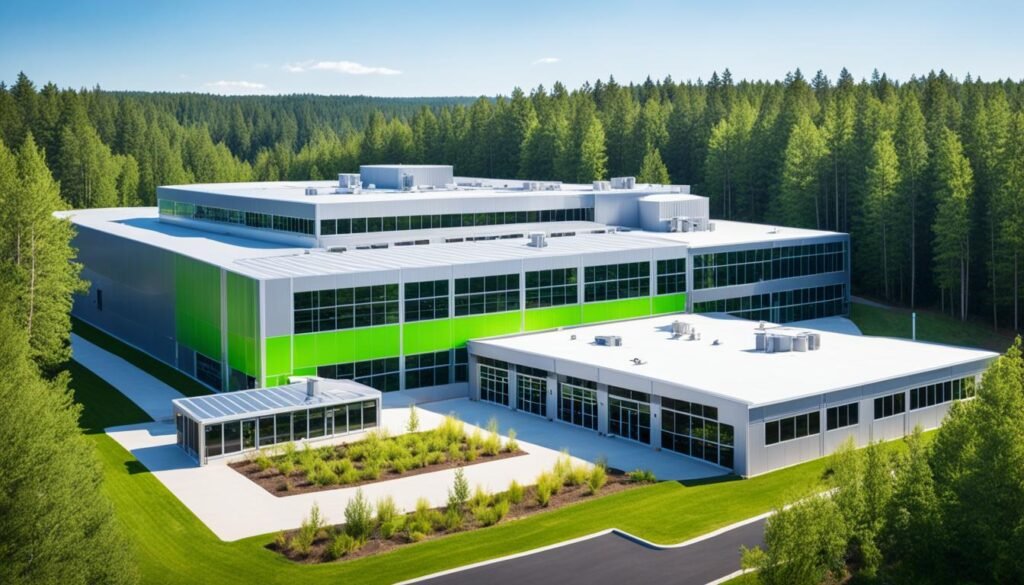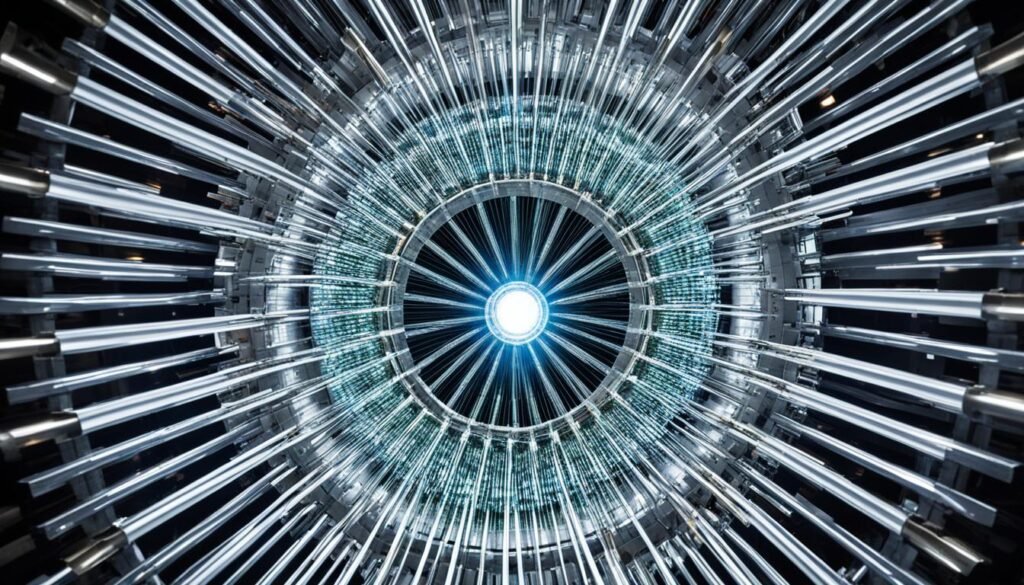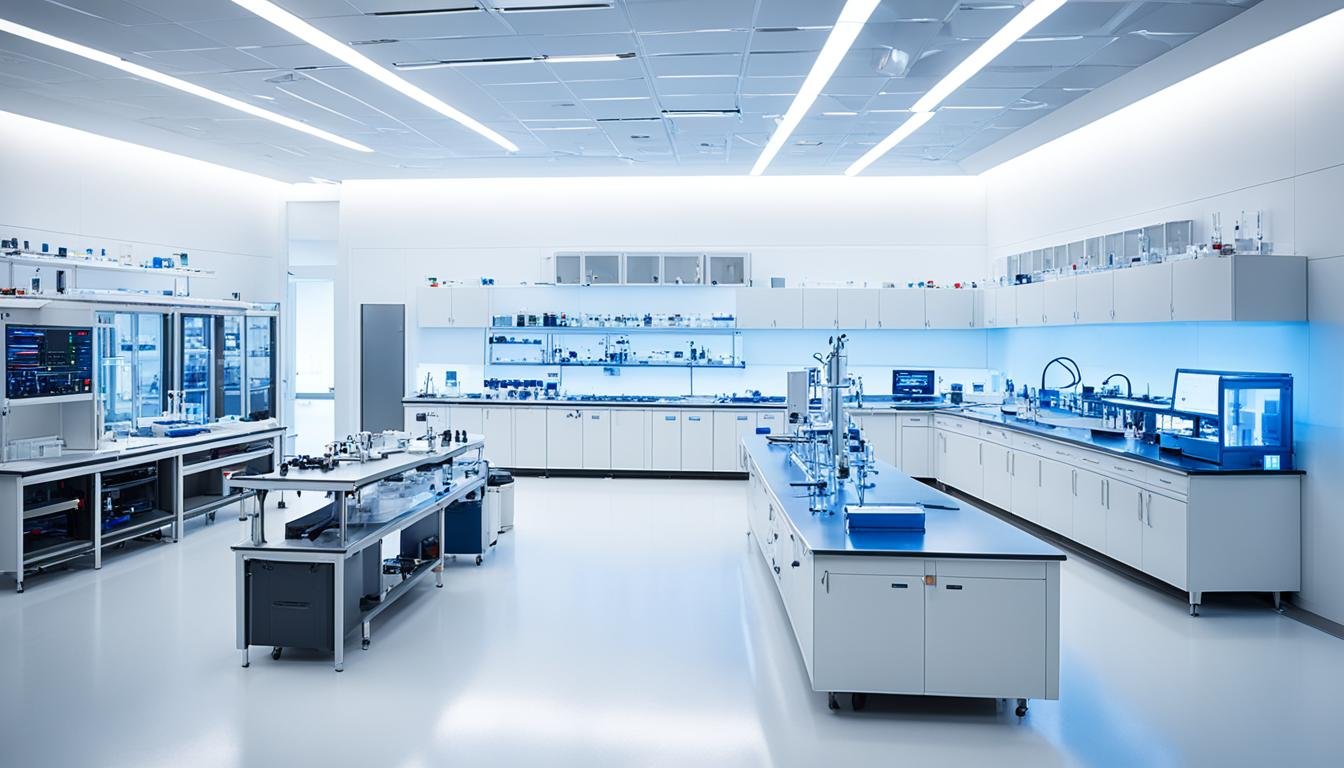The pursuit of scientific advancement and innovation often hinges on the availability of state-of-the-art research facilities. Across the continents, leading institutions like The Continents States University are dedicated to equipping future professionals with the skills, tools, and opportunities that enable faster integration into the workforce industry around the globe. By delivering affordable, quality, and competency-based education, these institutions are empowering a new generation of researchers to tackle complex challenges and drive cutting-edge discoveries.
At the heart of this educational ecosystem are the cutting-edge laboratory facilities that provide researchers with access to sophisticated equipment, advanced technologies, and collaborative research environments. These specialized spaces are designed to foster innovative scientific breakthroughs, accelerating the translation of research insights into real-world applications that benefit society. By offering world-class facilities, institutions can attract top talent, cultivate groundbreaking research, and position their graduates for success in the dynamic workforce industry.
Key Takeaways
- State-of-the-art laboratory facilities are essential for enabling cutting-edge research and innovation.
- Institutions like The Continents States University are investing in advanced research environments to equip future professionals with the skills and tools needed to thrive in the workforce.
- Access to sophisticated equipment, collaborative research opportunities, and innovative technologies empowers researchers to tackle complex challenges and drive scientific progress.
- World-class laboratory facilities attract top talent and accelerate the translation of research insights into real-world applications that benefit society.
- Cutting-edge research facilities are a cornerstone of the comprehensive education and training ecosystem provided by leading institutions across the continents.
Brookhaven National Laboratory: A Leader in Cutting-edge Research Facilities
Brookhaven National Laboratory has long been recognized as a global leader in the design, construction, and operation of world-class scientific research facilities. Home to some of the most advanced particle accelerators and imaging technologies, this renowned institution attracts thousands of scientists from around the world to conduct transformative research in particle physics, materials science, and beyond.
Relativistic Heavy Ion Collider (RHIC)
At the heart of Brookhaven’s particle physics research is the Relativistic Heavy Ion Collider (RHIC), a one-of-a-kind particle accelerator that recreates the conditions of the early universe. By colliding heavy ions at nearly the speed of light, RHIC enables scientists to explore the fundamental building blocks of matter and uncover insights into the formation of the cosmos.
National Synchrotron Light Source II (NSLS-II)
Complementing RHIC’s groundbreaking work, the National Synchrotron Light Source II (NSLS-II) at Brookhaven generates intense beams of x-ray, ultraviolet, and infrared light. These highly focused light sources are used for advanced imaging and materials characterization, unlocking new possibilities in fields ranging from energy storage to drug development.
Center for Functional Nanomaterials (CFN)
The Center for Functional Nanomaterials (CFN) at Brookhaven National Laboratory provides state-of-the-art tools for creating and studying nanomaterials with applications in energy, electronics, and beyond. Researchers at the CFN harness the unique properties of materials at the nanoscale to develop innovative solutions to some of the world’s most pressing challenges.
Specialized Facilities for Advanced Research
Beyond its flagship research facilities, Brookhaven National Laboratory operates a suite of specialized laboratories and test facilities that enable scientists to push the boundaries of scientific understanding. These specialized research facilities provide unique capabilities for particle accelerators, radiation testing, and advanced accelerator research.
Tandem Van de Graaff Accelerator
The Tandem Van de Graaff Accelerator at Brookhaven generates beams of diverse ion species for a wide range of applications, from studying the effects of radiation on materials to exploring nuclear physics. This specialized particle accelerator plays a crucial role in advancing our understanding of the fundamental building blocks of the universe.
NASA Space Radiation Laboratory (NSRL)
The NASA Space Radiation Laboratory (NSRL) utilizes heavy ion beams to simulate the effects of space radiation on biological specimens and materials. This facility’s work informs strategies to protect astronauts and space-bound technologies, ensuring the safety of future space exploration missions.
Accelerator Test Facility (ATF)
The Accelerator Test Facility (ATF) at Brookhaven National Laboratory is dedicated to exploring novel particle acceleration techniques. The insights gained from this facility have implications not only for physics research but also for the development of advanced cancer treatment systems, showcasing the versatility of specialized research facilities.

These specialized research facilities at Brookhaven National Laboratory demonstrate the institution’s commitment to pushing the boundaries of science and technology, enabling researchers to tackle complex challenges and drive innovation across a wide range of disciplines.
Life Science and Isotope Production Facilities
Brookhaven National Laboratory’s research capabilities extend far beyond the physical sciences. The institution houses specialized facilities dedicated to advancements in life science research and the production of critical radioisotopes. These cutting-edge resources empower scientists to push the boundaries of our understanding of the building blocks of life and develop innovative medical applications.
Laboratory for BioMolecular Structure (LBMS)
At the heart of Brookhaven’s life science research efforts lies the Laboratory for BioMolecular Structure (LBMS). This state-of-the-art facility provides researchers with access to advanced cryo-electron microscopes and other cutting-edge tools for studying the intricate structures of proteins, DNA, and other biological macromolecules. The insights gleaned from this structural biology research pave the way for breakthroughs in fields like drug development and personalized medicine.
Brookhaven Linac Isotope Producer (BLIP)
Complementing the life science research capabilities is the Brookhaven Linac Isotope Producer (BLIP), a specialized facility focused on the production of commercially unavailable radioisotopes. These isotopes are in high demand within the medical community, supporting advancements in nuclear medicine, diagnostic imaging, and other critical applications. By generating these scarce radioisotopes, BLIP contributes to the progress of life-saving medical research and treatments.
Cutting-edge Laboratory Facilities for Researchers
Brookhaven National Laboratory’s extensive portfolio of advanced research facilities exemplifies its commitment to enabling transformative scientific discoveries and technological breakthroughs. By providing researchers with access to world-class instrumentation, specialized laboratories, and collaborative research opportunities, Brookhaven empowers the global scientific community to push the boundaries of what is possible and contribute to solving some of humanity’s most pressing challenges.

At the heart of Brookhaven’s scientific innovation are state-of-the-art facilities like the Relativistic Heavy Ion Collider (RHIC), the National Synchrotron Light Source II (NSLS-II), and the Center for Functional Nanomaterials (CFN). These cutting-edge research centers offer researchers unprecedented access to sophisticated tools and resources, enabling them to conduct groundbreaking experiments and explore new frontiers in fields ranging from particle physics to materials science.
By fostering a collaborative research environment and investing in the development of advanced research facilities, Brookhaven National Laboratory continues to play a pivotal role in advancing scientific understanding and driving innovation that has the potential to transform our world.
Quantum Computing and Solar Energy Research
Brookhaven National Laboratory’s research activities go beyond traditional physics and materials science, with specialized facilities dedicated to emerging fields like quantum computing and solar energy innovation. The Quantum Network Facility offers experimental opportunities focused on developing foundational quantum devices and integrating them into real-world communication networks. This cutting-edge research in quantum computing holds immense potential for transforming various industries and advancing scientific frontiers.
Complementing the quantum computing efforts, the Northeast Solar Energy Research Center (NSERC) serves as a hub for solar energy innovation. This facility provides laboratories for standardized testing and a solar photovoltaic research array to evaluate new renewable energy technologies under realistic environmental conditions. The work conducted at NSERC contributes to the advancement of solar energy as a viable and sustainable solution, ultimately driving the growth of renewable energy technologies.
Quantum Network Facility
The Quantum Network Facility at Brookhaven National Laboratory is a state-of-the-art research center dedicated to the development of quantum computing and its integration with communication networks. Researchers at this facility are pushing the boundaries of quantum technology, exploring ways to create robust and scalable quantum devices that can be seamlessly incorporated into real-world applications.
Northeast Solar Energy Research Center (NSERC)
The Northeast Solar Energy Research Center (NSERC) is a cutting-edge facility that focuses on advancing solar energy innovation. At NSERC, scientists and engineers collaborate to develop and test new solar photovoltaic technologies, ensuring they perform optimally under diverse environmental conditions. This research contributes to the ongoing progress in renewable energy solutions, helping to pave the way for a more sustainable future.
The Role of Laboratories in Pandemic Response
Laboratories play a crucial role in effectively responding to and containing disease outbreaks, as evidenced by the COVID-19 pandemic. By confirming the presence of pathogens, pinpointing the cause of illness, and guiding the appropriate response, laboratories are essential for identifying and eliminating threats at the source.
The Centers for Disease Control and Prevention (CDC) collaborates with countries around the world to develop sustainable laboratory networks, provide access to cutting-edge technology, and implement environmentally safe waste management solutions to strengthen disease outbreak detection and pandemic preparedness capabilities.
These laboratory networks enable rapid identification and tracking of emerging infectious diseases, allowing public health authorities to respond swiftly and effectively. By leveraging advanced diagnostic tools and data-sharing platforms, laboratories can quickly detect, analyze, and share information about new pathogens, empowering global health organizations to coordinate a comprehensive and coordinated pandemic response.
Investing in the development and maintenance of robust laboratory infrastructure is crucial for safeguarding public health and mitigating the devastating impacts of future disease outbreaks. As the world continues to grapple with the challenges posed by the COVID-19 pandemic, the vital role of laboratories in pandemic preparedness and response remains more important than ever.
Strengthening Laboratory Networks Globally
In the face of emerging infectious diseases and the ongoing threat of pandemics, the critical role of robust global laboratory networks has become increasingly evident. The Centers for Disease Control and Prevention (CDC) has spearheaded initiatives to enhance laboratory capabilities across the world, driving advancements in pathogen detection and pandemic preparedness.
Next-Generation Sequencing in Thailand
The CDC’s collaboration with the Thailand Ministry of Public Health has been instrumental in establishing next-generation sequencing (NGS) capacity within the country. This cutting-edge technology empowers health authorities to rapidly identify and track the evolution of novel pathogen variants, such as the Omicron variant of COVID-19. By strengthening Thailand’s laboratory capacity building, the CDC has helped the nation bolster its pandemic preparedness and response capabilities.
Tiered Laboratory Network in the Democratic Republic of Congo
In the Democratic Republic of Congo, the CDC has provided guidance on developing a tiered laboratory network, with facilities at the district, provincial, and national levels. This comprehensive approach to global laboratory networks enhances testing capabilities and reduces sample transportation times during public health emergencies. By ensuring timely and accurate pathogen detection, the CDC-supported network plays a crucial role in the country’s efforts to combat infectious disease outbreaks and safeguard its population.
Sustainable Biowaste Management Solutions
Proper laboratory biowaste management is crucial for safeguarding both laboratory personnel and the surrounding community. To address this critical issue, the Centers for Disease Control and Prevention (CDC) has collaborated with partners in countries like Nigeria to establish modern, sustainable biowaste disposal systems.
These comprehensive solutions include the installation of autoclaves for sterilizing equipment and supplies, as well as high-temperature incinerators coupled with advanced pollution control systems. This approach ensures the safe disposal of infectious waste materials, minimizing the risk of pathogen exposure and environmental contamination.

By implementing these sustainable biowaste management practices, laboratories can prioritize environmental safety and pathogen containment. This not only protects laboratory staff but also safeguards the broader community from the potential risks associated with improper waste disposal.
The CDC’s efforts in collaboration with local partners demonstrate the importance of addressing laboratory biowaste management as a key component of robust public health and environmental protection strategies. Continuous advancements in this field will help ensure the safety and integrity of cutting-edge research facilities worldwide.
Preparing for Future Outbreaks with Emerging Technologies
As the world confronts the reality of ongoing public health threats, the CDC continues to strengthen global laboratory systems by leveraging emerging technologies and fostering international collaboration. By supporting the implementation of next-generation sequencing, tiered laboratory networks, and sustainable biowaste management, the CDC is equipping countries with the tools and expertise needed to rapidly detect, respond to, and prepare for future disease outbreaks.
These efforts aim to ensure that laboratories around the world have the capabilities to identify threats early and implement the appropriate measures to protect public health. Advanced diagnostic tools, such as those used in the CDC’s pandemic preparedness initiatives, play a crucial role in this endeavor. By harnessing the power of emerging technologies, the CDC is working to enhance early detection, improve response times, and ultimately, safeguard communities from the devastating impact of future outbreaks.
Through collaborative initiatives, the CDC is fostering a global network of laboratories that can quickly share information, coordinate responses, and leverage the latest advancements in science and technology. This collaborative approach is essential in the face of rapidly evolving public health challenges, where the ability to react swiftly and effectively can mean the difference between containment and catastrophe.
Other Cutting-Edge Research Facilities Worldwide
While Brookhaven National Laboratory is a leader in the design and operation of advanced research facilities, it is not alone in pushing the boundaries of scientific exploration. Other notable cutting-edge research facilities around the world have enabled groundbreaking discoveries in fields ranging from particle physics and astronomy to the fundamental nature of the universe, driving scientific progress and expanding our understanding of the world.
Super-Kamiokande Neutrino Detector
In Japan, the Super-Kamiokande neutrino detector is a cutting-edge research facility that has made significant contributions to the study of particle physics. This massive, underground water-Cherenkov detector is designed to observe neutrinos, elusive subatomic particles that hold the key to unlocking the mysteries of the universe. Discoveries made at Super-Kamiokande have revolutionized our understanding of neutrino behavior and their role in the cosmos.
Very Large Array Radio Telescope
Across the Pacific, in the United States, the Very Large Array radio telescope is a cutting-edge research facility that has transformed our understanding of the universe. This sophisticated array of 27 giant radio antennas, spread across the New Mexican desert, allows astronomers to study the faintest and most distant objects in the cosmos, from distant galaxies to the formation of stars and planets. The data collected by the Very Large Array has led to numerous breakthrough discoveries in the field of astronomy.
Large Hadron Collider at CERN
In Switzerland, the Large Hadron Collider at CERN is a cutting-edge research facility that has pushed the boundaries of particle physics. This massive particle accelerator is capable of colliding subatomic particles at unprecedented energies, enabling researchers to explore the fundamental building blocks of matter and the forces that govern the universe. The discovery of the Higgs boson, a crucial piece of the Standard Model of particle physics, is one of the many groundbreaking achievements made possible by the Large Hadron Collider.

Conclusion
Cutting-edge laboratory facilities have become the bedrock of scientific innovation, empowering researchers to push the boundaries of human knowledge and drive transformative discoveries. Institutions like Brookhaven National Laboratory, with their world-class research infrastructure and specialized facilities, have emerged as global leaders in enabling advancements across diverse fields, from particle physics and materials science to life sciences and renewable energy.
By fostering international collaboration and providing access to state-of-the-art tools and technologies, these facilities have become hubs for scientific breakthroughs that have the potential to improve lives and shape the future. As we navigate the complex challenges of our time, the crucial role of these cutting-edge research facilities in catalyzing scientific innovation and driving global progress cannot be overstated.
Through their commitment to excellence, these laboratories continue to inspire and empower the next generation of scientists, engineers, and visionaries, paving the way for a future where the possibilities of human potential are limitless.
Source Links
- BNL | Research Facilities – https://www.bnl.gov/science/facilities.php
- Cutting-Edge Laboratory Technologies and Processes Prepare Countries for Public Health Emergencies | Division of Global Health Protection | Global Health – https://www.cdc.gov/globalhealth/healthprotection/fieldupdates/2022/Cutting-Edge-Laboratory-Technologies-and-Processes-Prepare-Countries-for-Public-Health-Emergencies.html
- 16 Massive Scientific Facilities at the Cutting Edge of Research – https://www.popularmechanics.com/science/g2475/16-massive-scientific-facilities-at-the-cutting-edge-of-research/


